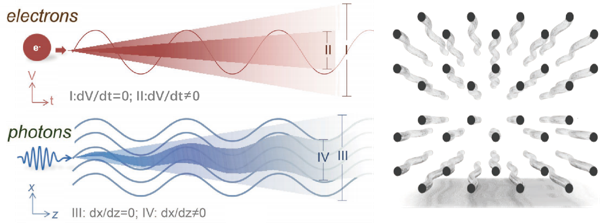Dynamic localization, originally reported in 1986, refers to the phenomenon that the evolution of electrons is inhibited in the presence of an applied AC electric field. Since 2000, periodically-curved optical waveguides have been used to simulate an external AC electric field, and wave packet suppression has also been observed, and sinusoidal bending waveguides with specific parameters can even completely localize photons in one waveguide.
The dynamic local transport characteristics can be used to analyze physical phenomena such as electron mobility anisotropy and spin system evolution, which is of great significance. In the past ten years, quantum simulation research on dynamic localization has been stagnant. For example, the quantitative relationship between its evolution variance and the evolution time has never been demonstrated. One of the difficulties lies in the need to experimentally prepare large-scale evolution paths.
The current technological progress of 3D photonic chips brings new opportunities. The research group led by Professor Xianmin Jin, Associate Researcher Hao Tang from Shanghai Jiaotong University reported the fabrication of sinusoidally-curved optical waveguide arrays by femtosecond laser direct writing. Through the two-dimensional quantum walk of photons, the transmission variance of the dynamic localization of the two-dimensional array is obtained; and the maintenance of the on-chip quantum state wave packet by the dynamic localization is demonstrated. The research results are published in Photonics Research, Volume 10, No. 6, 2022(Hao Tang, Tian-Yu Wang, Zi-Yu Shi, et al. Experimental quantum simulation of dynamic localization on curved photonic lattices[J]. Photonics Research, 2022, 10(6): 1430).
The realization of dynamic localization based on periodic curvature of optical waveguides is equivalent to introducing changes in the effective refractive index to the waveguides. The effective coupling coefficients are put into the Hamiltonian of quantum walks, and the evolution results of light in sinusoidal bending waveguides can be theoretically obtained. The experimental phenomenon of suppressed evolution of light appears in both one-dimensional and two-dimensional arrays.
The evolutionary transmission variance of light in the waveguide can be obtained from the probability distribution of quantum walks at each node. For the one-dimensional sinusoidal bending waveguide, the dynamic local transmission variance can also be directly obtained by the analytical method, which is consistent with the results obtained by the aforementioned quantum walk method.
The two-dimensional experiment is more complicated. The anisotropy of the coupling coefficient makes it difficult to obtain an analytical solution for the dynamic local transmission variance in the two-dimensional case. At this time, the quantum walk method is still applicable, where the anisotropic effective coupling coefficient can be introduced into the Hamiltonian, and the transmission variance can be obtained through the evolution probability distribution.
The dynamic localization can achieve zero effective coupling coefficient under specific bending parameter settings. This feature can be used to achieve on-chip maintenance of the entire quantum state wavepacket and is experimentally demonstrated for the first time. After the straight waveguide is connected to a specific curved waveguide, the wave packet evolution is stagnant; re-connecting the straight waveguide can make the wave packet continue to evolve. Therefore, on-chip wave packet maintenance with flexible duration can be achieved.
As pointed out by Hao Tang, by mapping the dynamic localization model to the quantum walk Hamiltonian, the transmission variance of the two-dimensional structure, which is difficult to be directly analytically calculated, is obtained. This reflects the advantages of quantum simulation. Meanwhile, the use of dynamic localization to achieve the maintenance of on-chip quantum state wave packets has enlightenment for the application of integrated optical quantum information processing.
The team made full use of various rich waveguide modulation methods such as three-dimensional waveguide layout and waveguide curvatures to achieve dynamic local quantum simulation. In the future, the scalable optical quantum chip technology will be further employed to carry out more experimental research on quantum simulation and quantum information processing.

Figure: Schematic illustration of studying the dynamic localization phenomenon of photon evolution in a periodically curved waveguide by analogy to electron transport in an AC electric field.


